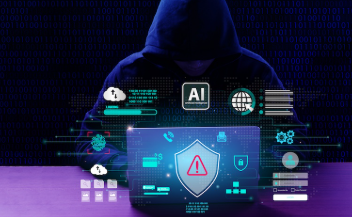How Hackers Exploit AI (And How to Stop Them)
Hackers are increasingly targeting artificial intelligence systems, employing tactics such as data poisoning and adversarial attacks. These methods exploit inherent vulnerabilities, leading to compromised outputs and diminished integrity. The consequences of such exploitation can be severe, affecting user trust and technological reliability. Organizations must implement comprehensive strategies to safeguard their AI systems. Understanding these threats is critical, as the evolving landscape of cyber threats demands a proactive and informed response. What effective measures can truly mitigate these risks?
Common Tactics Used by Hackers to Exploit AI
As artificial intelligence systems become increasingly integrated into various sectors, hackers have adapted their tactics to exploit vulnerabilities inherent in these technologies.
Common methods include data poisoning, where malicious inputs corrupt training datasets, and adversarial attacks, which manipulate AI models to produce incorrect outputs.
These tactics compromise system integrity, highlighting the necessity for robust security measures to safeguard against evolving threats in the digital landscape.
Read more: Is Your Smartphone Really Spying on You?
Consequences of AI Exploitation
While the manipulation of AI systems may initially seem like a technical issue, the broader consequences of such exploitation extend far beyond individual organizations.
Ethical implications arise as trust erodes, impacting user autonomy and privacy.
Additionally, security vulnerabilities can lead to systemic failures, affecting critical infrastructure and societal norms.
Addressing these consequences is essential for safeguarding both technological integrity and the fundamental freedoms of individuals.
Effective Strategies to Protect AI Systems
To ensure the robustness of AI systems against exploitation, organizations must implement a multi-layered security framework that addresses both technical vulnerabilities and human factors.
Effective strategies include robust security protocols that safeguard data integrity, continuous monitoring for anomalies, and regular employee training to mitigate human error.
Proactive measures not only strengthen defenses but also foster a culture of awareness and vigilance essential for safeguarding AI technologies.
Conclusion
In the ever-evolving landscape of AI, hackers act like skilled locksmiths, exploiting the tiniest flaws to gain entry. As organizations fortify their defenses, they must recognize that a single compromised door could jeopardize the entire system. By implementing multi-layered security measures and fostering a culture of vigilance, they can safeguard their technological integrity. Ultimately, proactive strategies and continuous education serve as the ultimate keys, ensuring that the doors to AI remain securely locked against malicious intrusions.






